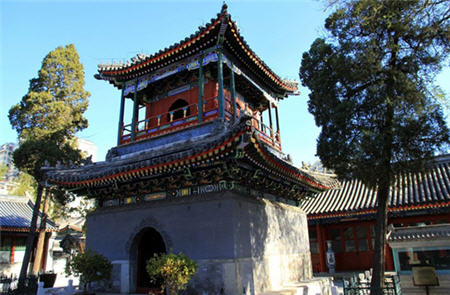
RNA - The Niujie Mosque, or Ox Street Mosque, is widely known as the most ancient mosque in Beijing, as well as the largest one. It covers an area of over 6,000 square meters, and was originally built in 996 during Liao Dynasty. The mosque is located in the Niujie core area in Southwest Beijing – a place that has Beijing's largest concentration of Muslim people.
History
The Niujie Mosque was first built in 996 during the Liao Dynasty (916-1125). After it was destroyed by armies of Genghis Khan in 1215, the Mosque was rebuilt in 1443 in the Ming Dynasty and significantly expanded in 1696 under the Qing Dynasty. During the Qing Dynasty, the neighboring markets were known for Halal beef and mutton, even until today, the presence is still quite strong with Muslim grocery stores with Arabic sign along the road.
Layout
The buildings in the mosque are symmetrically arranged. The main buildings include the Wangyue Pavilion, the Worship Hall, the Stele Pavilion, and so on. Unlike south-facing Buddhist temples, it points towards Mekka, the holy land of Islam, in the west. The entrance gate is fronted by a large wall with a white marble pedestal, which stretches for around 40 meters. A series of relief sculptures sit on the wall, depicting images of happiness and fortune. After passing through the entrance gate, visitors are faced by the Watching Moon Tower; a hexagonal, two-storied structure, reaching over 10 meters tall and housed under a golden-glazed roof. The tower is so named because it was used by the imam to observe the position of the moon to determine times for fasting.
Muslim Culture
Niujie Mosque enjoys great reputation among Muslims. Many important cultural relics, such as steles from the Ming Dynasty (1368-1644) and cupreous hollowware from the Qing Dynasty (1644-1911), are preserved in the mosque. From the past to the present, Muslims come here to bathe and warship every day. Especially on Islamic festivals, native and foreign Muslims gather here and celebrate the festivals together.
R111/108/C/